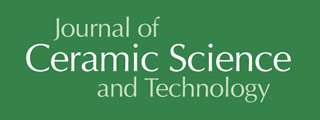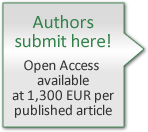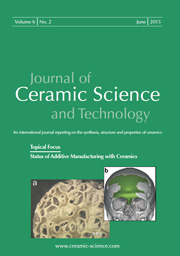Articles
All articles | Recent articles
PEG-Assisted Synthesis of Manganese Oxide Nanorods and Their Application as Electrode Material for Lithium-Ion Batteries
P. Ragupathy1, J. Sundaramurthy2, P. Suresh Kumar2, V. Thavasi2, S. Ramakrishna2
1 Fuel Cell Section, Electrochemical Power Systems Division, Central Electrochemical Research Institute, Karaikudi 630 006, India
2 NUS Nanoscience and Nanotechnology Initiative, National University of Singapore, Singapore 117576
received March 17, 2013, received in revised form July 3, 2013, accepted September 4, 2013
Vol. 4, No. 3, Pages 157-162 DOI: 10.4416/JCST2013-00007
Abstract
In this work, we report on large-scale synthesis of α-MnO2 nanorods by the polyol route based on a simple redox reaction using an organic reducing agents potassium permanganate (KMnO4) and polyethylene glycol (PEG). The as-synthesized amorphous MnO2 is converted into crystalline form on annealing at temperature of 600 °C. The formation of MnO2 nanorod-like morphology is confirmed with scanning electron microscopy complemented with high-resolution transmission electron microscopy. The nanorods measure about 50 – 200 nm in length and 50 nm in diameter. The electrochemical lithium intercalation and de-intercalation of nanorods are performed by means of galvanostatic charge-discharge cycling. The initial discharge capacity of nanorod α-MnO2 is found to be about 214 mAh/g-1 with reasonably good rate capability.
![]() Download Full Article (PDF)
Download Full Article (PDF)
Keywords
Manganese oxide, nanorods, lithium-ion batteries
References
1 Nalwa, H.S.: Handbook of nanostructured materials and nanotechnology, Academic Press: New York, 2000.
2 Burda, C., Chen, X., Narayanan, R., El-Sayed, M.A.: Chemistry and properties of nanocrystals of different shapes, Chem. Rev., 105, 1025 – 1102, (2005).
3 Bell, A.T.: The impact of nanoscience on heterogeneous catalysis, Science, 299, 1688 – 1691, (2003).
4 Tarascon, J.-M., Armand, M.: Issues and challenges facing rechargeable lithium ion batteries, Nature, 414, 359 – 367, (2001).
5 Xia, Y., Yang, P., Sun, Y., Wu, Y., Mayers, B., Gates, B., Yin, Y., Kim, F., Yan, H.: One-dimensional Nanostructures: Synthesis, characterization, and applications, Adv. Mater., 15, 353 – 389, (2003).
6 Wang, J., Wang, X., Peng, Q., Li, Y.: Synthesis and characterization of bismuth single-crystalline nanowires and nanospheres, Inorg. Chem., 43, 7552 – 7556, (2004).
7 Duan, X., Huang, Y., Cui, Y., Wang, J., Lieber, C.M.: Indium phosphide nanowires as building blocks for nanoscale electronic and optoelectronic devices, Nature, 409, 66 – 68, (2001).
8 Bruce, P.G., Scrosati, B., Tarascon, J.M.: Nanomaterials for rechargeable lithium batteries, Angew. Chem. Int. Ed., 47, 2930 – 2946, (2008).
9 Sun, Y- K., Yoon, C.S., Kim, C.K., Youn, S.G., Lee, Y- S., Yoshio, M., Oh, I-H.: Degradation mechanism of spinel LiAl0.2Mn1.8O4 cathode materials on high temperature cycling, J. Mater. Chem., 11, 2519 – 2522, (2001).
10 Yan, H., Huang, X., Chen, L.: Microwave synthesis of LiMn2O4 cathode material, J. Power Sources, 81 – 82, 647 – 650, (1999).
11 Thackeray, M.M.: Manganese oxides for lithium batteries, Prog. Solid State Chem., 25, 1 – 71, (1997).
12 Cheng, F., Zhao, J., Song, W., Li, C., Ma, H., Chen, J., Shen, P.: Facile controlled synthesis of MnO2 nanostructures of novel shapes and their application in batteries, Inorg. Chem., 45, 2038 – 2044, (2006).
13 Zhang, R., Yu, X., Nam, K.W., Ling, C., Arthur, T.S., Song, W., Knapp, A.M., Ehrlich, S.N., Yang, X.Q., Matsui, M.: α-MnO2 as a cathode material for rechargeable Mg batteries, Electrochem. Comm., 23, 110 – 113, (2012).
14 Lei, Z., Shi, F., Lu, L.: Incorporation of MnO2-coated carbon nanotubes between graphene sheets as supercapacitor electrode, ACS Appl. Mater. Interfaces, 4, 1058 – 1064, (2012).
15 Brousse, T., Toupin, M., Dugas, R., Athouel, L., Crosnier, O., Belanger, D.: Crystalline MnO2 as possible alternatives to amorphous compounds in electrochemical supercapacitors, J. Electrochem. Soc., 153, A2171 – A2180, (2006).
16 Devaraj, S., Munichandraiah, N.: Electrochemical supercapacitor studies of nanostructured α-MnO2 synthesized by microemulsion method and the effect of annealing, J. Electrochem. Soc., 154, A80, (2007).
17 Ragupathy, P., Vasan, H.N., Munichandraiah, N.: Synthesis and characterization of nano-MnO2 for electrochemical supercapacitor studies, J. Electrochem. Soc., 155, A34 – A40, (2008).
18 Espinal, L., Suib, S.L., Rusling, J.F.: Electrochemical catalysis of styrene epoxidation with films of MnO2 nanoparticles and H2O2, J. Am. Chem. Soc., 126, 7676 – 7680, (2004).
19 Luo, X.L., Xu, J.J., Zhao, W., Chen, H.Y.: A novel glucose ENFET based on the special reactivity of MnO2 nanoparticles, Biosens. Bioelectron., 19, 1295 – 1300, (2004).
20 Yu, J., Zhao, T., Zeng, B.: Mesoporous MnO2 as enzyme immobilization host for amperometric glucose biosensor construction, Electrochem. Comm., 10, 1318 – 1321, (2008).
21 Chitrakar, R., Kanoh, H., Kim, Y.S., Miyai Y., Ooi, K.: Synthesis of layered-type hydrous manganese oxides from monoclinic-type LiMnO2, J. Solid State Chem., 160, 69 – 76, (2001).
22 Wang, X., Li, Y.: Selected-control hydrothermal synthesis of α- and β-MnO2 Single Crystal Nanowires, J. Am. Chem. Soc., 124, 2880 – 2881, (2002).
23 Liu, Y., Zhang, M., Zhang, J., Qian, Y.: A simple method of fabricating large-area α-MnO2 nanowires and nanorods, J. Solid State Chem., 179, 1757 – 1761, (2006).
24 Xu, J.J., Luo, X.L., Du Y., Chen, H.Y.: Application of MnO2 nanoparticles as an eliminator of ascorbate interference to amperometric glucose biosensors, Electrochem. Comm., 6, 1169 – 1173, (2004).
25 Kijima, N., Takahashi, Y., Akimoto, J., Awaka, J.: Lithium ion insertion and extraction reactions with Hollandite-type manganese dioxide free from any stabilizing cations in its tunnel cavity, J. Solid State Chem., 178, 2741 – 2750, (2005).
26 Suresh, P., Rodrigues, S., Shukla, A.K., Shivashankar S.A., Munichandraiah, N.: Synthesis of LiCo1-xNixO2 from a low temperature solution combustion route and characterization, J. Power Sources, 112, 665 – 670, (2002).
27 Suresh, P., Rodrigues, S., Shukla, A.K., Vasan H.N., Munichandraiah, N.: Synthesis of LiCo1-xMnxO2 from a low-temperature route and characterization as cathode materials in Li-ion cells, Solid State Ionics, 176, 281, (2005).
Copyright
Göller Verlag GmbH


